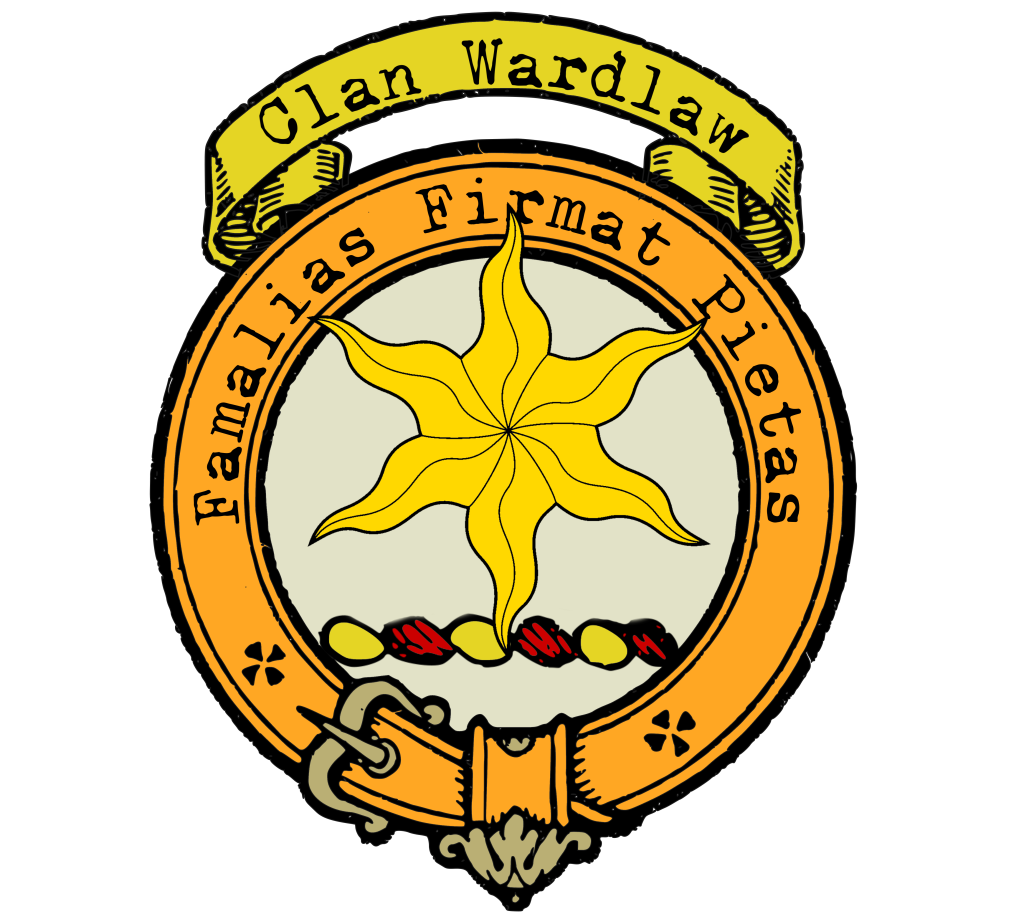Clan Wardlaw
|
|
CREST: A celestial star Or MOTTO: Familias firmat pietas TRANSLATION: Religion strengthens families VARIATIONS: N/A |
| The name “Wardlaw” finds its etymological roots in the Old English words “ward” (meaning a watch or guard) and “law” (referring to a hill). This suggests that the Wardlaws were early guardians, possibly situated on hilltop lookout posts, exemplifying their role as protectors of their lands.
The earliest records of Clan Wardlaw place them near Beauly, in the lands of John Bisset, a Norman lord, dating as far back as 1210. It was here that the Wardlaws began their journey, establishing themselves as an influential presence in the region. The Wardlaw clan’s history is intricately intertwined with the tumultuous politics of medieval Scotland. At one point, they supported John Balliol’s claim to the Scottish crown against Robert the Bruce. However, as the winds of power shifted, they reconciled with the triumphant Bruce, receiving lands in Roxburghshire. The Wardlaw clan produced individuals of great significance. One of the most notable was Sir Henry Wardlaw of Torry, who married a niece of Walter, the High Steward of Scotland. His son, also named Henry Wardlaw, became Bishop of Glasgow in 1367 and was later elevated to cardinal status by Pope Urban VI in 1381. His contributions to the church and his role in the educational sphere were instrumental. His nephew, Henry Wardlaw, founded the University of St Andrews in 1410, obtaining a papal charter for it in 1413, further solidifying the Wardlaws’ legacy in education. The Wardlaws of Torry continued to prosper, and over time, several prominent cadet families within the clan acquired substantial estates of their own, thereby expanding the Wardlaw influence throughout Scotland. Notably, Sir Henry Wardlaw, third Baronet, acquired the lands of Pitreavie at the beginning of the seventeenth century. He was created a Baronet of Nova Scotia in 1631 and constructed a splendid renaissance-style castle that still stands today. However, history records a less welcoming side of the Lairds of Pitreavie when Highlanders, fleeing from Oliver Cromwell’s troops after the Battle of Inverkeithing in 1651, sought refuge at Pitreavie and were driven away. Though the Wardlaw estates have passed from the family’s hands over the years, the baronetcy has survived. The Wardlaws of Gogarmount made significant contributions to the legal profession in the nineteenth century. David Wardlaw of Gogarmount, in particular, was a notable peerage lawyer who left his mark on Scotland’s legal history. The Wardlaws have also played a role in financial history, with the founder of the Wardlaws of Gogarmount contributing to the establishment of the Scottish Widows’ Fund, now a prominent insurance investment company in Europe. |
|
Citations:
|
|
Purchase @ Redbubble
Purchase @ Amazon.com
Purchase @ Amazon.co.uk

